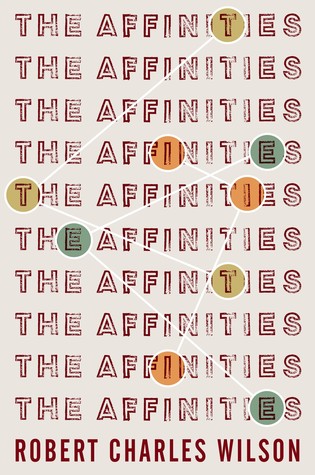
The Affinities, written by Robert Charles Wilson, is a book set in the near future. The world is viscerally similar to our own but yet it is evident that much of what we see today is slowly collapsing. One such example is the deteriorating Indo-Pakistani relationship that sets much of the backdrop for the state of the world. However, most prominently seen in the book is the erosion of the basic family structure.
The main character in the book, Adam Fisk, is a student at Sheridan College in Toronto who initially does not have many close relationships. His one friend is a fellow student named Dex, and much of his family does not support him. Tired with this situation, Adam chooses to get tested for an affinity, one of 22 (23 if ‘no affinity’ is counted) different groupings of hyper-cooperative individuals formed from research on a science called social teleodynamics. He gets placed in Tau.
In this affinity, Adam finds the companionship and love that he has longed for. Gone was the toxicity of his relationship with his father, and the less then amicable relationship he had with his brother. He even
This is the story of part one of the Affinities, a deeply personal and human tale of the search for love and companionship. Something he could never find in his real family. I found myself empathising more then I wished I would with Adam. I, to a certain degree, feel estranged from my family; I constantly seek to find more fulfilling relationships with other people. I desperately wished that the affinities were a real thing.
Part two and three were less fulfilling in my opinion. It transformed from a near-future contemporary story to a thriller, and a thriller that failed to explain the world in a satisfactory way. There are 22 affinities, but yet only two, that of Tau and Het, were described in any detail. This world was deeply fascinating, and I desperately wanted to know more about it. I desperately wanted it to be true.
A naive wish I suppose. Wilson goes on to describe how the affinities are far from perfect. How such identifications and groupings only serve to sectify the world more then it already has, and how brutally unfair such a society truly is.
Overall, this book is endlessly fascinating. It was truly engrossing but only because of how there was so much that I desired to know more. In the end, despite the chaos as a result of the affinities, the world begins anew, with a new social teleodynamic theory bringing people together, and we can only speculate whether events recur.
End of the day? 3 stars.
